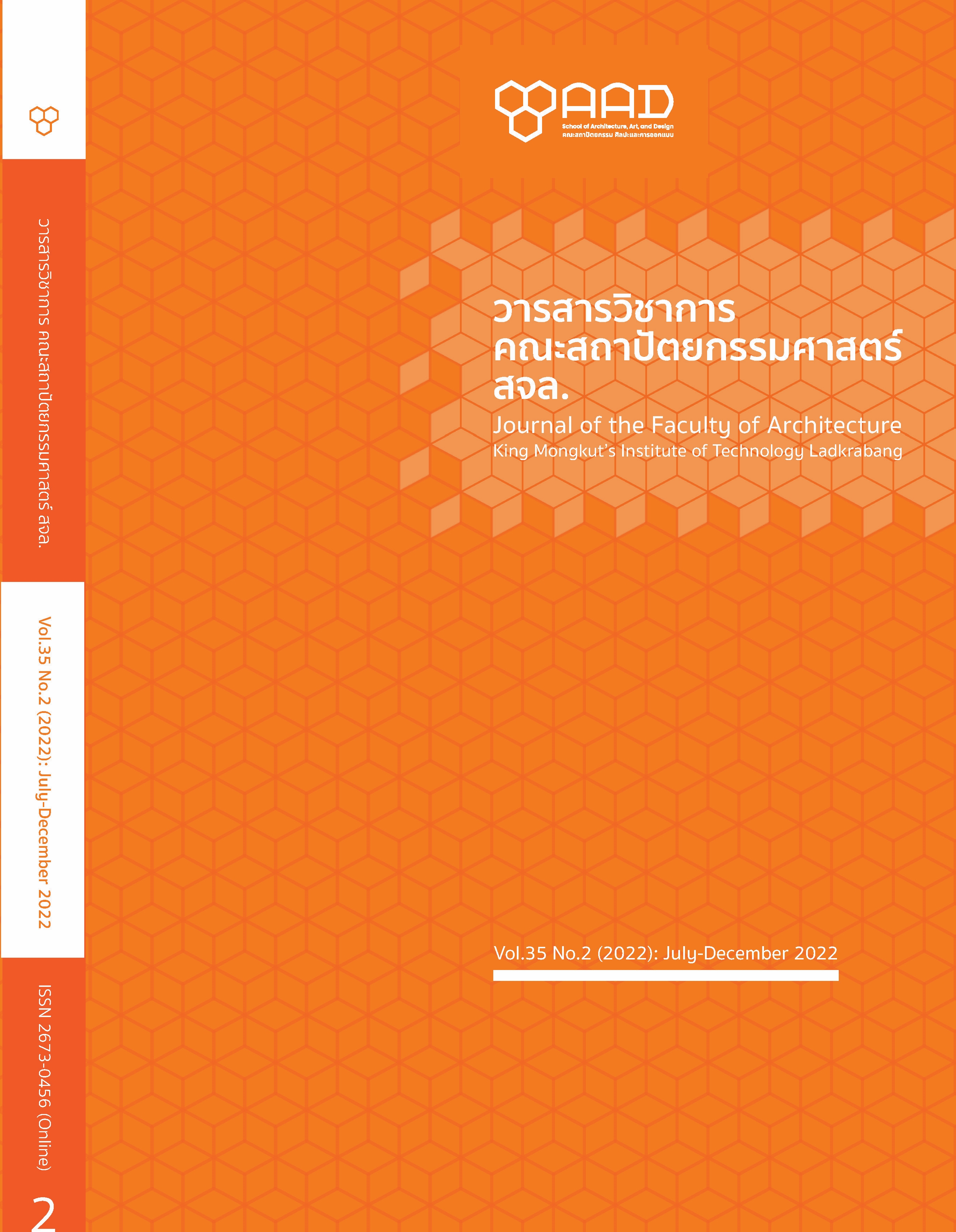The Study of Flexible Construction for Dwelling on the Yona Friedman’s Principle
Main Article Content
Abstract
The current dwelling has developed to be diverse in terms of appearance, structure, materials, and construction. But without understanding the relationship between humans and living in architecture, the construction could not deliver a form suitable for living as it should be, even it can serve humans the basic function of hazard and weathering protection. As a result, the author is interested in the study of construction that responds to a wide range of human behaviors and activities as well as promotes the solution of living problems arising from the crisis. It requires an understanding of social interaction, self-awareness, and a sense of place. The authors, therefore, chose to study the idea of Yona Friedman, an architect who believes in changing human behavior that results in an increase in the ability of flexibility in architecture. It focuses on the analysis of construction development with the concept of flexibility in response to human living behavior and the identification of the relationship between flexible construction components, methods, and applications.
The concepts and theories involved in the study are based on the relationship of the keywords: flexibility, construction in relation to Mobile Architecture and dwelling that to be useful in determining the scope of the study and understanding of components, methods, and applications, which leads to the creation of a system of applying principles that create a flexible architecture for living. The authors used the study method through two main steps: an overview of the relationship of components that create the flexible construction and a flexible construction from Friedman's work timeline that can be divided into three phases: the conceptual phase; key development and the paradigm shift. The results of a study on the relationship of components in flexible construction for living as well as methods and applications can be concluded that most of the construction is residential type. But there is a degree of difference which has developed and ended as a gathering place. The principle of Yona Friedman shows the rhythm of the construction development with stasis and a leap forward, especially between the juncture of the key development and the paradigm shift, and factors affecting the flexible construction.
Yona Friedman has realized the ability of flexibility to enable architecture to act in response to critical issues and it differentiated the concept of Friedman’s flexible construction from both abstract and concrete concepts related to dwelling and other architectures. And the author trust that Friedman's concept of construction will be useful to support users who are experiencing difficulties in various fields of political, economic, or social, as well as the use of local materials that define the structure and form according to the context and the site conditions as they are all important aspects for architecture that serves humans
Article Details

This work is licensed under a Creative Commons Attribution-NonCommercial-NoDerivatives 4.0 International License.
This work is licensed under a Creative Commons Attribution-NonCommercial-ShareAlike 4.0 International License.
Copyright Transfer Statement
The copyright of this article is transferred to Journal of The Faculty of Architecture King Mongkut's Institute of Technology Ladkrabang with effect if and when the article is accepted for publication. The copyright transfer covers the exclusive right to reproduce and distribute the article, including reprints, translations, photographic reproductions, electronic form (offline, online) or any other reproductions of similar nature.
The author warrants that this contribution is original and that he/she has full power to make this grant. The author signs for and accepts responsibility for releasing this material on behalf of any and all co-authors.
References
ต้นข้าว ปาณินท์. (2553). คนและความคิดทางสถาปัตยกรรม. กรุงเทพฯ: สำนักพิมพ์สมมติ.
Bostjan. (2017). Yona Friedman. Retrieved from: https://architectuul.com/architect/yona-friedman.
Forty, A. (2000). Words and Building: A Vocabulary of Modern Architecture. London: Thames & Hudson.
Friedman, Y. (1959). Principles Ville Spatiale. Retrieved from: http://www.yonafriedman.nl/?page_id=396.
Friedman, Y. (1970). L’architecture Mobile. Paris: Casterman.
Friedman, Y. (2012). Biography. Retrieved from: http://www.yonafriedman.nl/?page_id=1751.
Friedman, Y. (2012). Principles Mobile Architecture. Retrieved from: http://www.yonafriedman.nl/?page_id=333.
Hertzberger, H. (2016). Diagoon Housing Delft 1967-1970. Retrieved from:
https://www.hertzberger.nl/images/nieuws/DiagoonHousingDelft2016.pdf.
Heidegger, M. (1971). Building, Dwelling, Thinking. New York: Harper & Row.
Kronenburg, R. (2005). Flexible Architecture: The Cultural Impact of Responsive Building. Retrieved from: https://www.irbnet.de/daten/iconda/CIB12025.pdf.
Kronenburg, R. (2007). Flexible: Architecture that Responds to Change. London: Laurence King.
Kronenburg, R. (2014). Flexible Architecture: From Mobility to Adaptability. Retrieved from: https://futureurbanism.com/interview/from-mobility-to-adaptability.
Norberg-Schulz, C. (1979). Genius: Towards a Phenomenology of Architecture. New York: Rizzoli.
Pernice, R. (2007). Metabolist Movement between Tokyo Bay Planning and Urban Utopias in the Years of Rapid Economic Growth 1958-1964. (PhD in Architecture, Waseda University).
Safdie, M. (1967). The Habitat. Retrieved from: https://www.safdiearchitects.com.
Villari, S. (1991). 1760-1834: Art and Science of Architecture. New York: Rizzoli.


